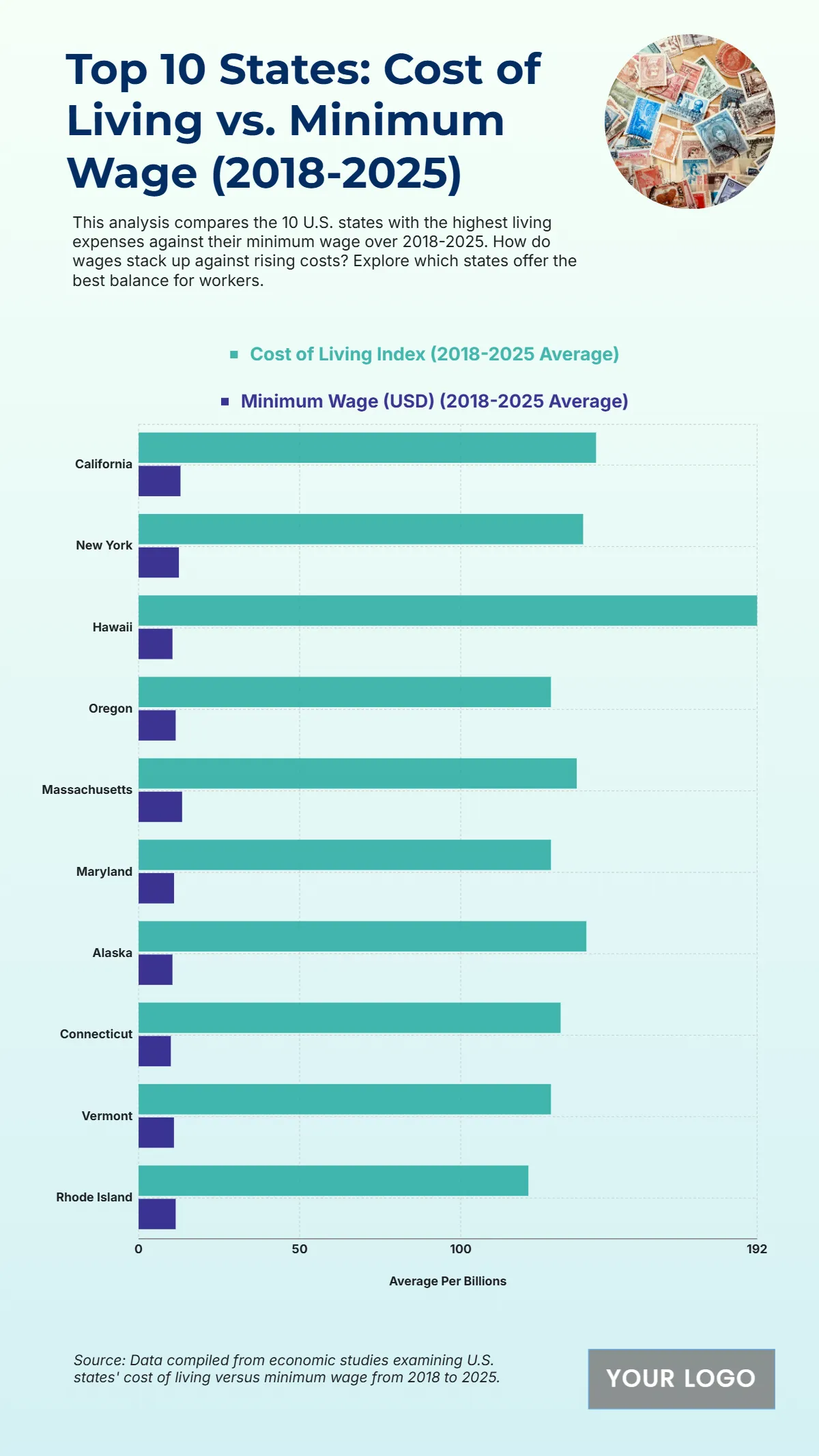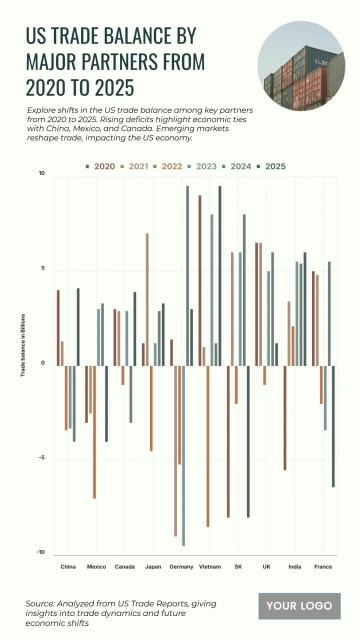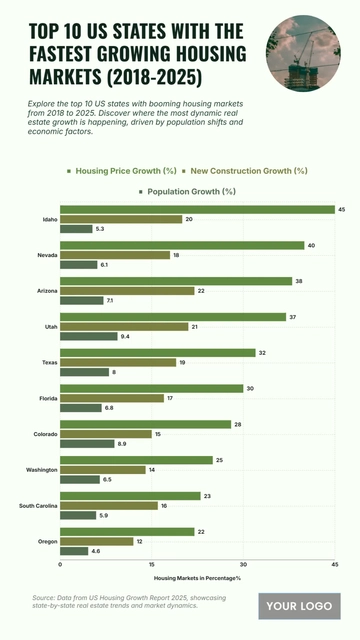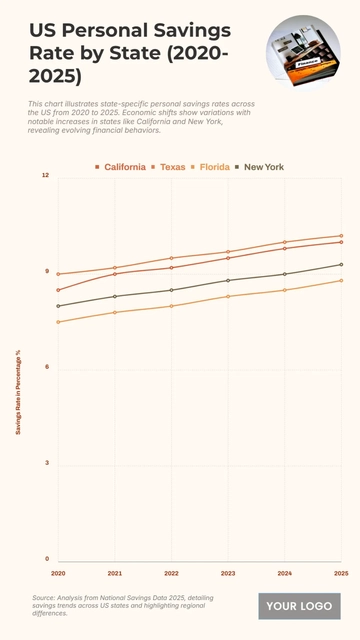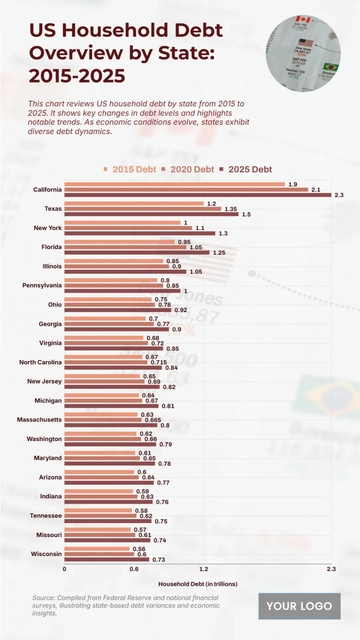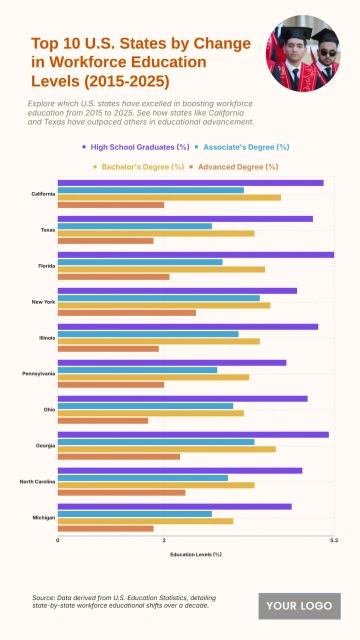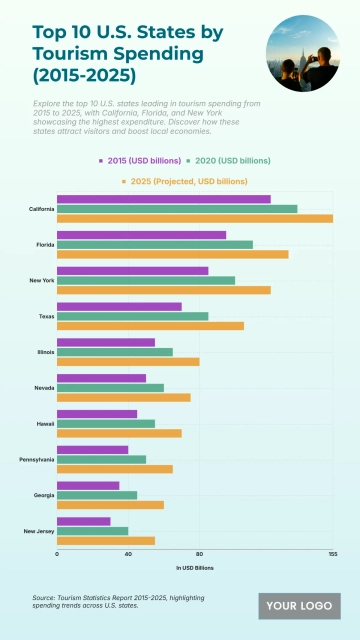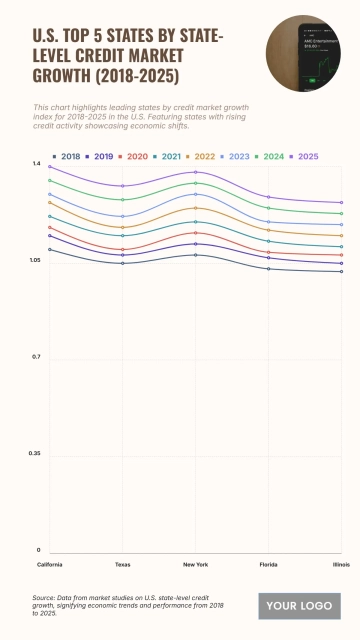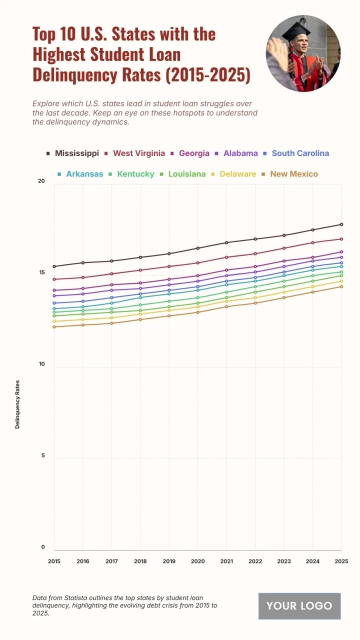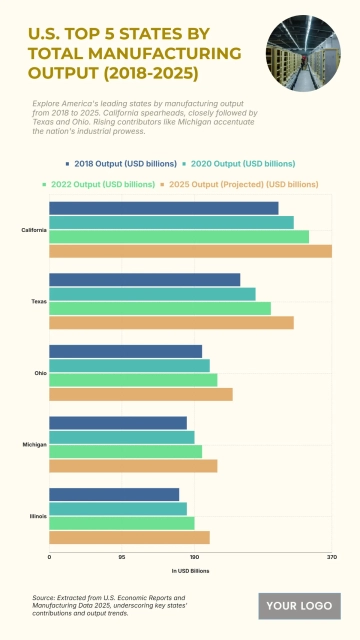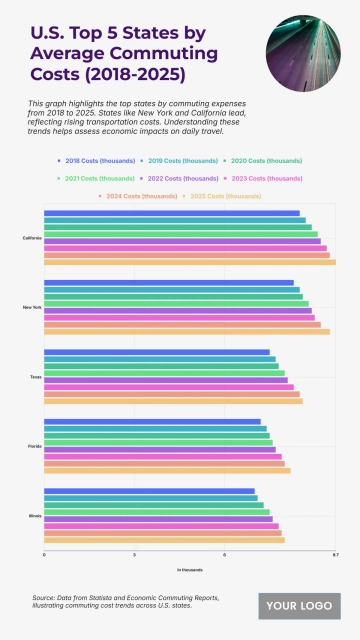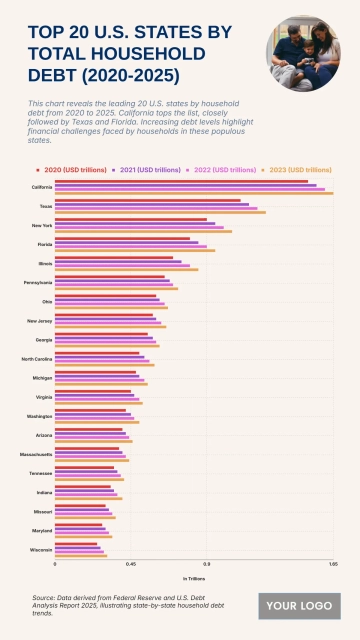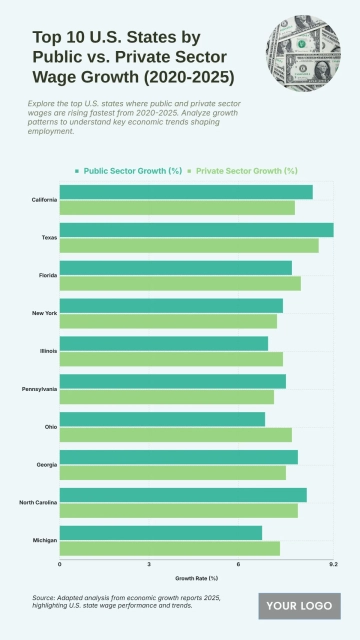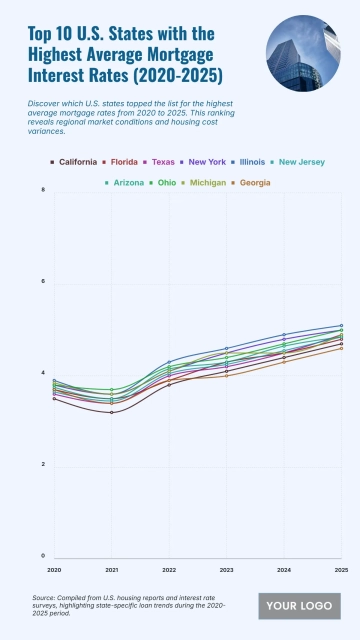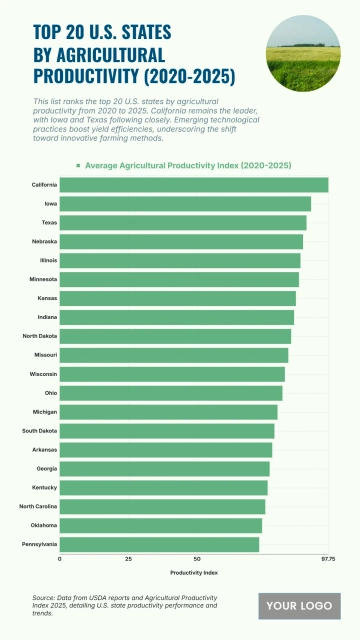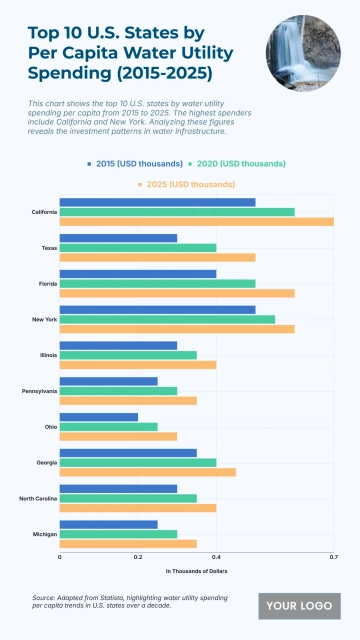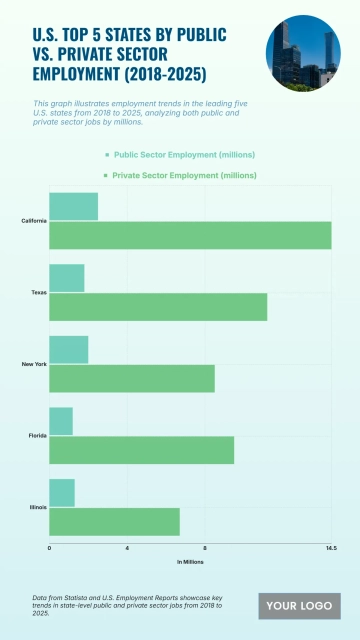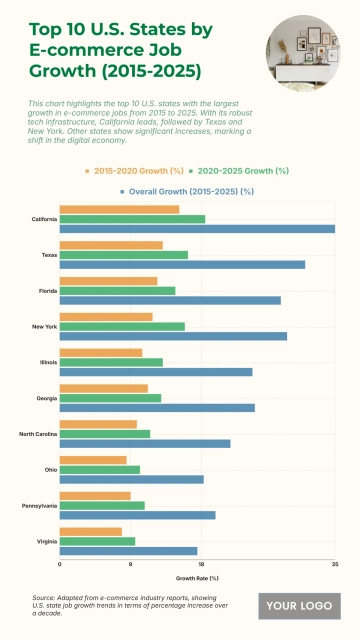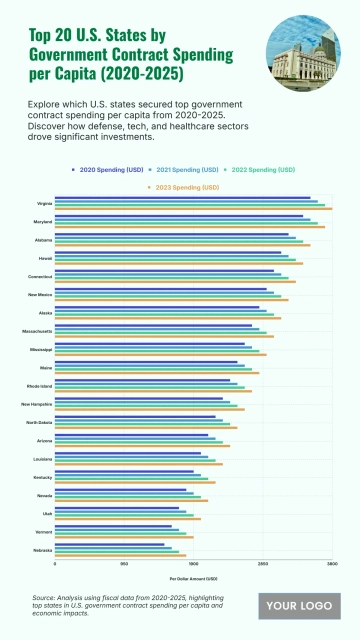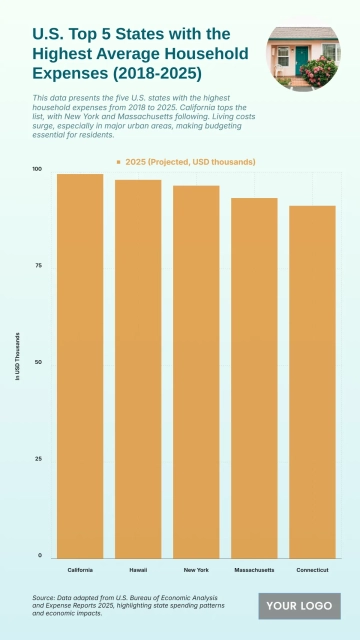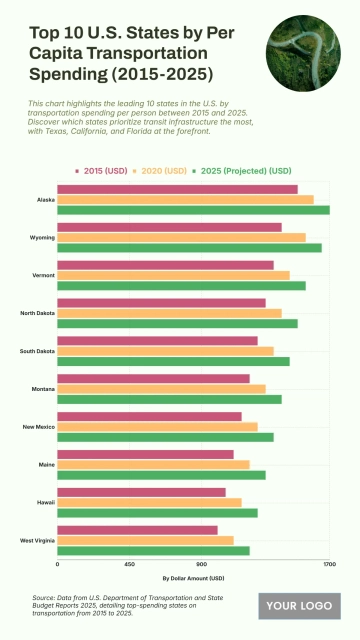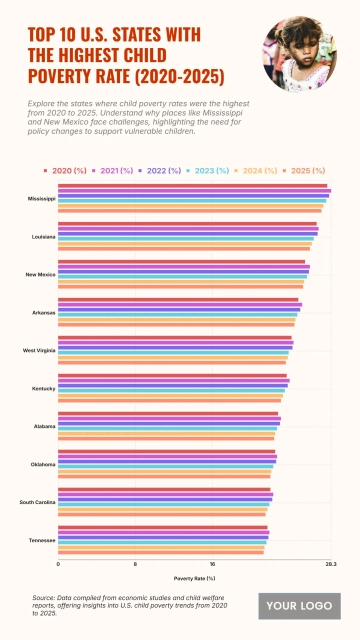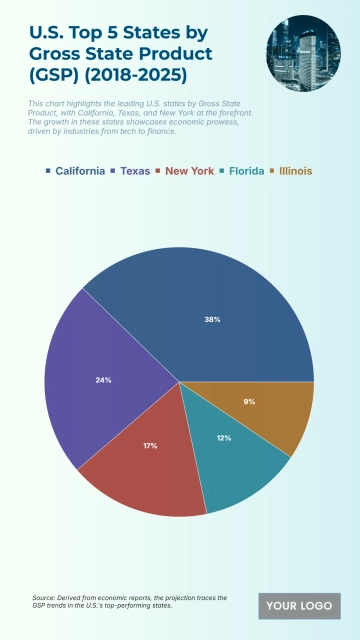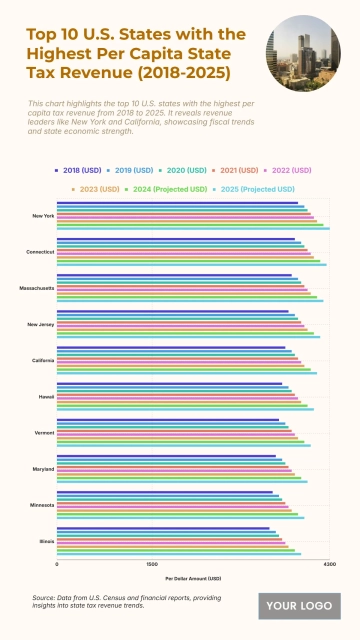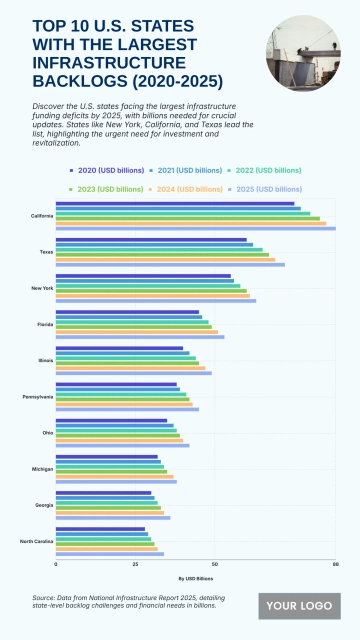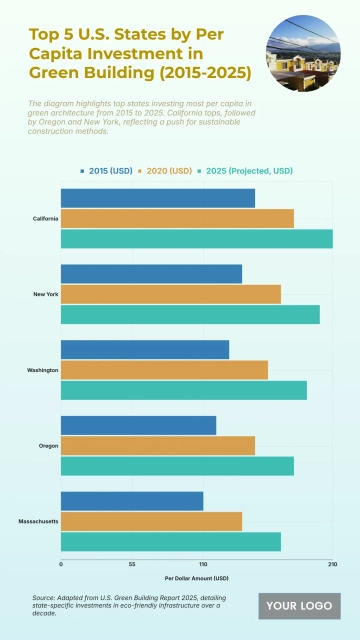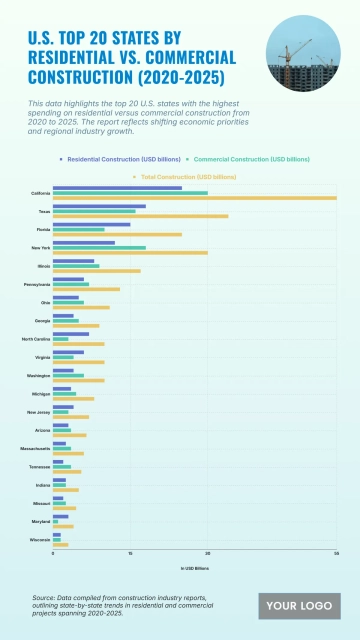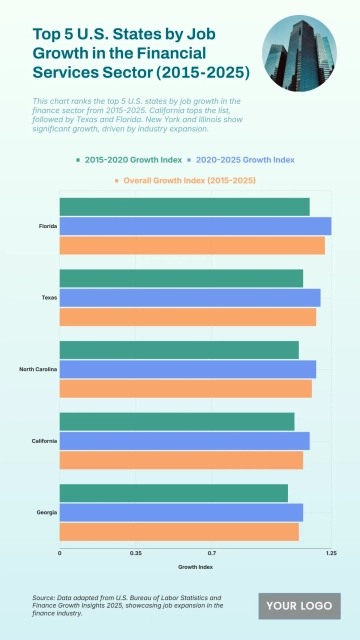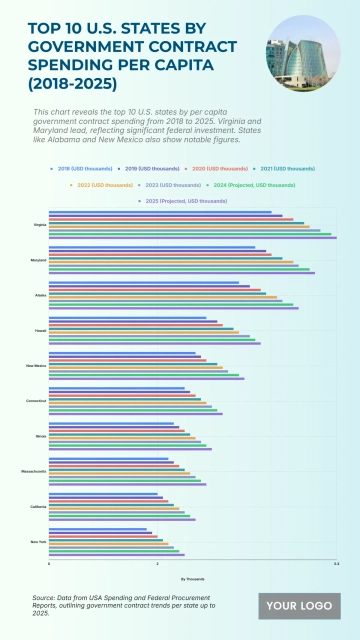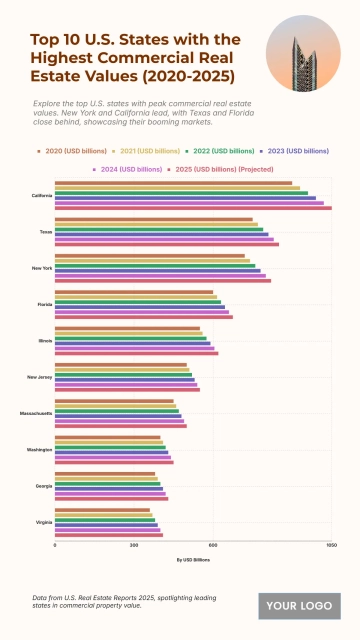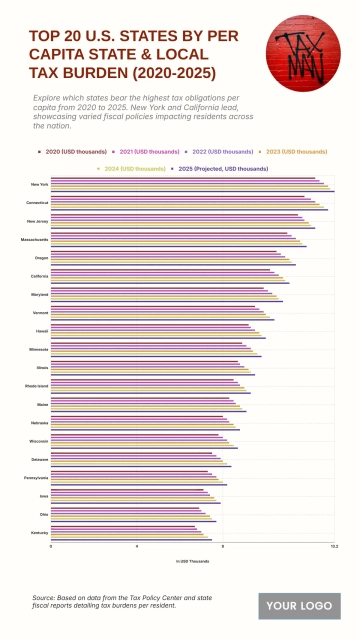he chart compares the top 10 U.S. states by cost of living versus minimum wage averages from 2018 to 2025, revealing substantial disparities between income levels and living expenses. Hawaii tops the list with the highest Cost of Living Index, exceeding 190 points, despite having one of the nation’s higher minimum wages, indicating significant affordability challenges. California and New York follow, each with living cost averages surpassing 160 points, where housing and transportation drive financial pressure for lower-income workers. Oregon and Massachusetts maintain elevated living costs above 140 points, although both states have steadily raised minimum wages to offset inflation. Maryland and Alaska record balanced trends near 130 points, showing moderate wage support relative to expenses. Connecticut and Vermont approach similar figures, reflecting consistent but limited wage growth against increasing costs in utilities and housing. Rhode Island, while ranking last on the list, still demonstrates a notable gap between its cost of living index and minimum wage. Overall, the data underscores persistent wage-to-expense imbalances across high-cost states, emphasizing the ongoing struggle for workers to achieve sustainable living conditions despite gradual policy adjustments.
Free Top 10 U.S. States by Cost of Living vs. Minimum Wage (2018-2025)
| Labels | Cost of Living Index (2018-2025 Average) |
Minimum Wage (USD) (2018-2025 Average) |
| California | 142 | 13 |
| New York | 138 | 12.5 |
| Hawaii | 192 | 10.5 |
| Oregon | 128 | 11.5 |
| Massachusetts | 136 | 13.5 |
| Maryland | 128 | 11 |
| Alaska | 139 | 10.5 |
| Connecticut | 131 | 10 |
| Vermont | 128 | 10.96 |
| Rhode Island | 121 | 11.5 |
